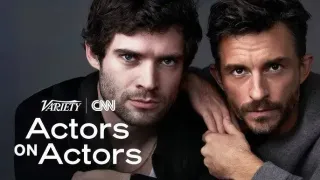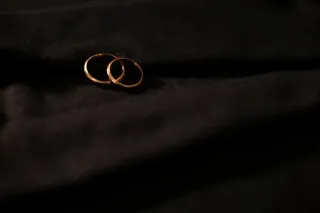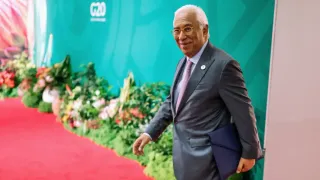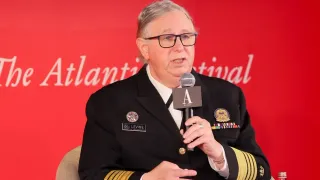May 6, 2020
Trump's Top Spy Pick Vows He Won't Politicize Intelligence
Deb Riechmann READ TIME: 4 MIN.
Rep. John Ratcliffe, President Donald Trump's pick to be the nation's top intelligence official, was nothing if not consistent as he told lawmakers a dozen or so times that he wouldn't allow politics to color information he took to the president.
The senators kept asking anyway as Trump's firing or forcing out of at least seven top U.S. intelligence officials since last summer overshadowed the Texas Republican's confirmation hearing Tuesday.
The forced departures have left the Office of the Director of National Intelligence, which oversees the nation's 16 spy agencies, without a single Senate-confirmed leader as the nation faces the COVID-19 pandemic, threats from Iran and North Korea, Russian disinformation campaigns to meddle in the U.S. elections, and rising competition from China. The turmoil has deepened speculation that the president is trying to place loyalists in charge of the nation's intelligence apparatus.
The senators' questions reflected that skepticism: Would you communicate intelligence to Trump even if you knew the president strongly disagreed with it?
"Of course," Ratcliffe replied.
Even if it put your job in jeopardy?
"Of course."
Ratcliffe added: "Anyone's views on what they want the want intelligence to be will never impact the intelligence that I deliver. Never."
Variations of the question kept coming, but Ratcliffe offered the same answer: "No."
"I will be entirely apolitical as the director of national intelligence," he said, adding that he had an apolitical job as a U.S. attorney and "kept both parties out of everything that I did."
Ratcliffe's critics aren't convinced and worry he's beholden to Trump. They point to his ardent defense of the president during the Russia investigations and Trump's impeachment and argue that he doesn't have enough intelligence experience for the job. Before being elected to Congress in 2014, Ratcliffe was mayor of Heath, Texas, and a U.S. attorney in the Eastern District of Texas.
"Jesus. He is going to be the DNI," tweeted Mike Hayden, a former director of the CIA and the National Security Agency who served in both Republican and Democratic administrations.
Trump first nominated Ratcliffe for the job nine months ago, but Ratcliffe withdrew after doubts about his experience were raised. Trump unexpectedly nominated him again in February and his chances at securing the job appear better, although confirmation is not assured.
"His knowledge of cybersecurity is particularly important given the challenges our country faces," said Sen. Susan Collins, R-Maine, who joined fellow Republicans as well as Democrats in pressing Ratcliffe to deliver objective intelligence to the president regardless of Trump's views.
He has the backing of former Attorney General John Ashcroft and other fellow Republicans, including Texas Rep. Will Hurd, a former undercover officer for the CIA, who said Ratcliffe has more than 15 years of experience dealing with national security-related issues.
Liberal-leaning lawmakers expressed concern that Trump nominated Ratcliffe to gain an upper hand on the typically nonpartisan intelligence network.
"I find it very disturbing," Sen. Angus King, I-Maine, said in an interview last week. "It appears that the president wants to shape the intelligence community. My concern is that this is a politicizing of the intelligence community, which would be a huge mistake for the president himself.
"You want intelligence to be truthful and unvarnished and as straightforward as possible – not what you want to hear, not what supports your policy positions," he said. "Because if you don't get that kind of information, you're liable to make catastrophic mistakes. ... Our foreign policy disasters of the last 50 years often have been preceded by cooked intelligence."
Sen. Mark Warner, the Virginia Democrat who is vice chairman of the Senate intelligence committee, specifically accused Trump of not wanting to hear any intelligence that does not comport with his views. The White House has disputed that allegation in the past.
"Unfortunately, what we have seen from the president, ever since he came into office, is an unrelenting and undeserved political attack upon the professional women and men of our intelligence agencies," Warner said. "This is not because our intelligence community is deserving of these attacks. Nor are they at the heart of some 'deep state' conspiracy to undermine our political leaders."
Warner listed intelligence officials who have been sidelined: former national intelligence director Dan Coats and his deputy, Sue Gordon; former acting director of the National Counterterrorism Center Russ Travers and his deputy, Peter Hall; former acting national intelligence director Joseph Maguire and his deputy, Andrew Hallman; and Michael Atkinson, the former watchdog of the intelligence community who first revealed a whistleblower complaint last fall that led to Trump's impeachment.
The ODNI currently is led by an acting director, Richard Grenell, the U.S. ambassador to Germany who has a background in communications and is seen as a loyalist to Trump. As acting director, Grenell has made additional personnel moves and ordered a review of the Office of the Director of National Intelligence that Trump critics fear is a house-cleaning and something that an "acting" official shouldn't be allowed to undertake.
Some intelligence professionals disagree that Grenell is trying to purge the agencies of qualified individuals, saying that in most cases the replacements named for those ousted have been experienced national security professionals.
Amanda Schoch, communications director at ODNI, said Grenell and his staff are addressing reforms recommended by previous national intelligence directors. Even so, Warner and Sen. Richard Burr, R-N.C., the chairman of the intelligence committee, asked Grenell in a recent letter to consult with the committee before making any more personnel changes and perhaps stop making them altogether until someone is officially confirmed for the job.
Warner expressed concern that Shelby Pearson, who leads a unit focused on Russian and other nations' meddling in U.S. elections, might be fired. With the November election just months away, Warner asked Ratcliffe to promise not to dismantle that unit or oust its leaders.
"I have no intention of making changes in that regard," Ratcliffe said.






